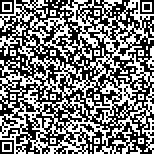本文已被:浏览 1060次 下载 656次
投稿时间:2017-11-10 网络发布日期:2018-03-20
投稿时间:2017-11-10 网络发布日期:2018-03-20
中文摘要: 目的 探讨继发性腋-锁骨下静脉血栓形成介入治疗的临床价值。方法 回顾分析2011年1月至2016年6月期间32例继发性腋-锁骨下静脉血栓形成急性期(≤14 d)患者的临床资料。所有患者均接受低分子肝素皮下注射抗凝治疗,20例患者加用导管接触性溶栓(CDT)治疗[经静脉插管,将溶栓导管头端置于血栓段内并保留,然后经导管注射低剂量尿激酶(25~75万IU/d)持续溶栓治疗(6.3±3.3)d]。12例患者仅接受单纯抗凝治疗。根据出血风险评估HAS-BLED评分,选取利伐沙班或华法林出院后继续抗凝治疗至少3个月。对比CDT 联合抗凝治疗与单纯抗凝治疗两种治疗方案的临床效果。结果 两组在住院天数[(11.9±5.3)d vs (9.8±3.8)d]、治疗后双上肢周径差[(1.4±0.6)cm vs (1.0±0.6)cm]及并发症发生率(31.6% vs 16.7%)方面,差异无统计学意义(P>0.05),血栓清除率CDT组优于单纯抗凝组(89.5% vs 50.0%,P<0.05)。在随访6 个月时单纯抗凝和CDT两组患者之间静脉通畅率无统计学差异(P>0.05),Kaplan Meier生存分析以及组间log rank检验表明,CDT组整体随访(8.1±4.1)月,血管通畅时间优于单纯抗凝组(P<0.05)。对12例CDT后造影复查提示合并锁骨下静脉狭窄患者,行球囊扩张血管成形术;成形术后,其中7例因残余狭窄,植入8枚锁骨下静脉支架;随访6个月时,支架均通畅。结论 继发性上肢深静脉血栓急性期置管溶栓安全、有效。对比单纯抗凝,远期通畅率更高。对合并锁骨下静脉狭窄,血管成形术短期效果良好。
Abstract:Objective To evaluate the clinical value of interventional therapy for secondary axillary-subclavian venous thrombosis. Methods The clinical data of 32 patients with secondary axillary-subclavian venous thrombosis in acute stage (less than or equal to 14 days) from January 2011 to June 2016 were analyzed retrospectively. The anticoagulant therapy with subcutaneous injection of low molecular heparin was given in all patients. On the basis of anticoagulant therapy, 20 patients were treated with catheter-directed thrombolysis (CDT) therapy [by transvenous catheterization, the head end of thrombolytic catheter was implanted into the thrombus segment and was retained, and then injection of low dose urokinase (25-75) ×10 000 IU/d was given via catheter for continuous thrombolytic therapy (6.3±3.3) d], and the remaining 12 patients were treated with anticoagulant therapy only. According to bleeding risk assessment HAS-BLED scoring, rivaroxaban or warfarin anticoagulant therapy was used at least three months after discharge. The curative effects of CDT combined with anticoagulant therapy and pure anticoagulant therapy were analyzed. Results There were no significant differences in the length of hospital stay [(11.9±5.3) d vs (9.8±3.8)d], the difference of circumferences of two upper limbs[(1.4±0.6)cm vs(1.0±0.6)cm] and the incidence of complications (31.6% vs 16.7%) between two groups (all P>0.05). The rate of thrombus clearance for CDT was superior to pure anticoagulant therapy (89. 5% vs 50.0%, P<0.05). At 6-month of follow-up, there was no significant difference in the venous patency rate between two groups (P>0.05). Kaplan-Meier survival analysis and intergroup log-rank test showed that the venous patency time of overall follow-up [(8.1±4.1) months] in CDT therapy was significantly better than that in pure anticoagulant therapy group (P<0.05). Conclusion CDT is safe and effective for secondary axillary-subclavian venous thrombosis in acute stage and has higher patency rate compared with pure anticoagulant therapy. In the patients combined with subclavian vein stenosis, angioplasty has a good short-term effect.
keywords: Axillary vein Subclavian vein Axillary-ubclavian venous thrombosis Upper extremity deep vein thrombosis Anticoagulant therapy Catheter-directed thrombolysis therapy
文章编号: 中图分类号:R 654.3 文献标志码:A
基金项目:国家自然科学基金项目资助(81541061);南京市医学科技发展重点项目资助(ZKX10004)
引用文本:
石浩钒,顾建平,施万印,何旭,楼文胜,陈亮,陈国平,苏浩波,宋进华,汪涛,赵伯翔,黄昊,李英豪.继发性腋-锁骨下静脉血栓形成的介入治疗[J].中国临床研究,2018,31(3):294-298.
石浩钒,顾建平,施万印,何旭,楼文胜,陈亮,陈国平,苏浩波,宋进华,汪涛,赵伯翔,黄昊,李英豪.继发性腋-锁骨下静脉血栓形成的介入治疗[J].中国临床研究,2018,31(3):294-298.
